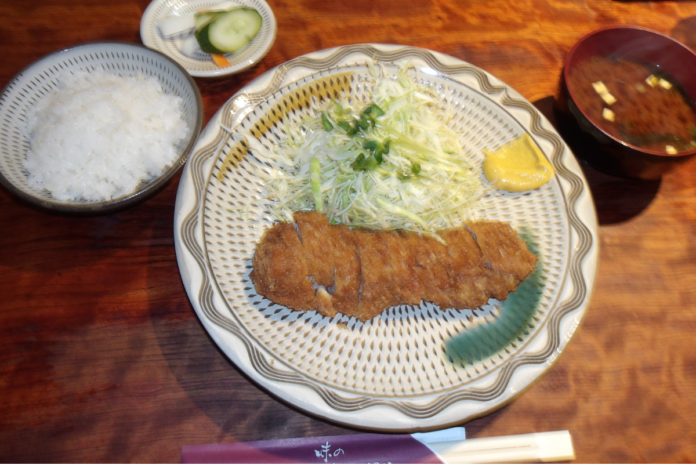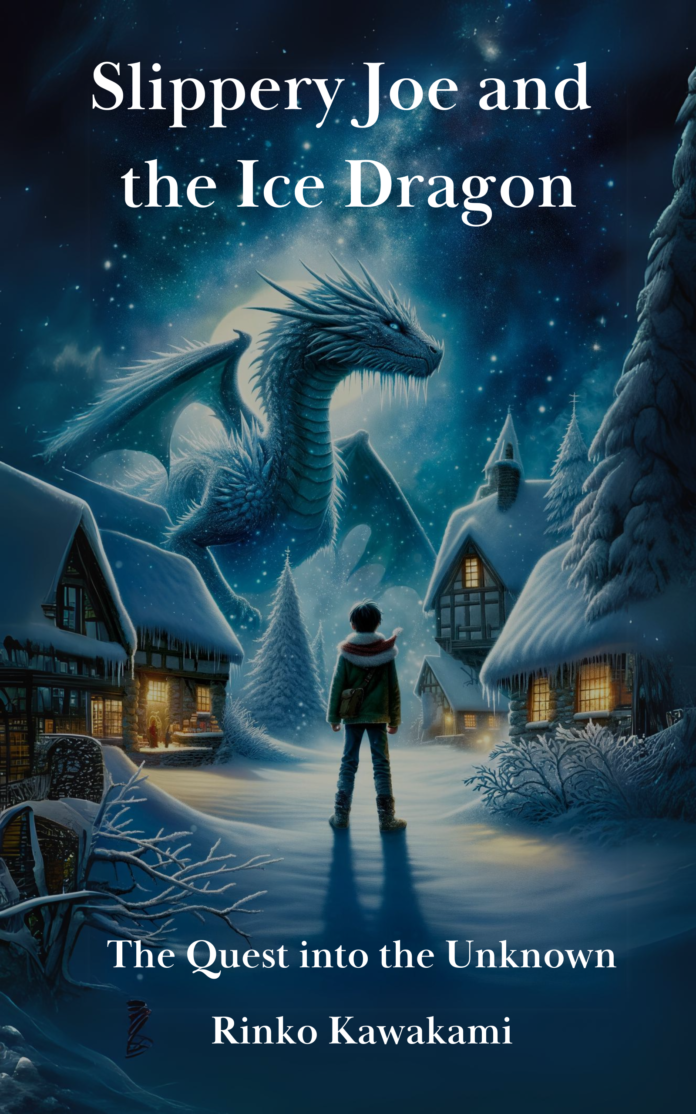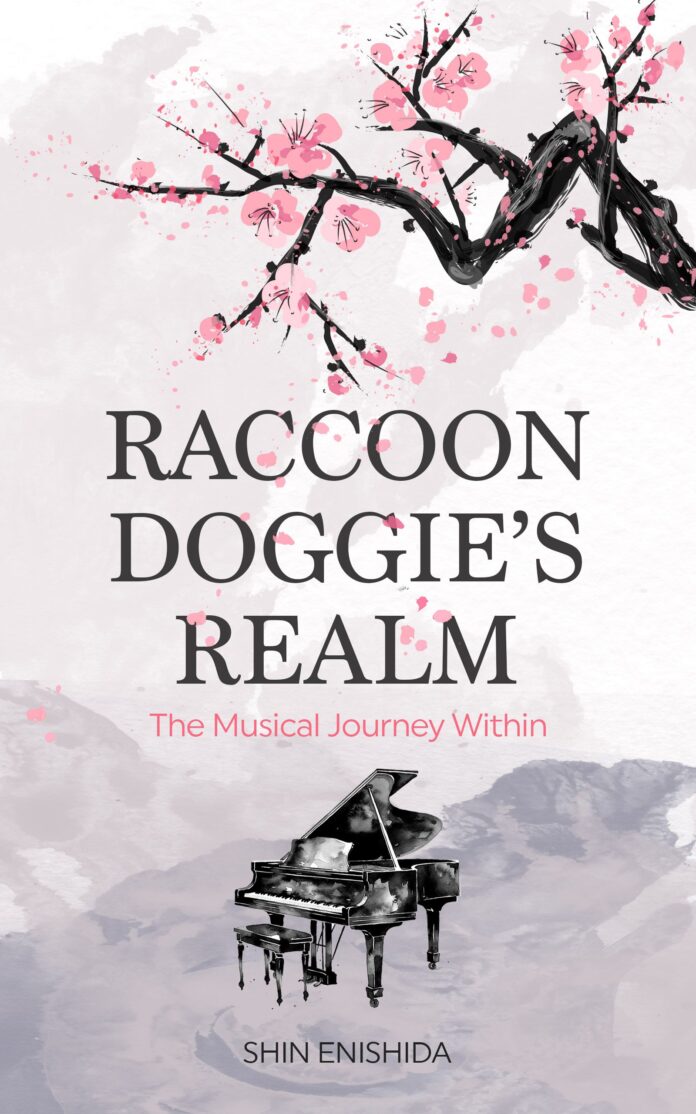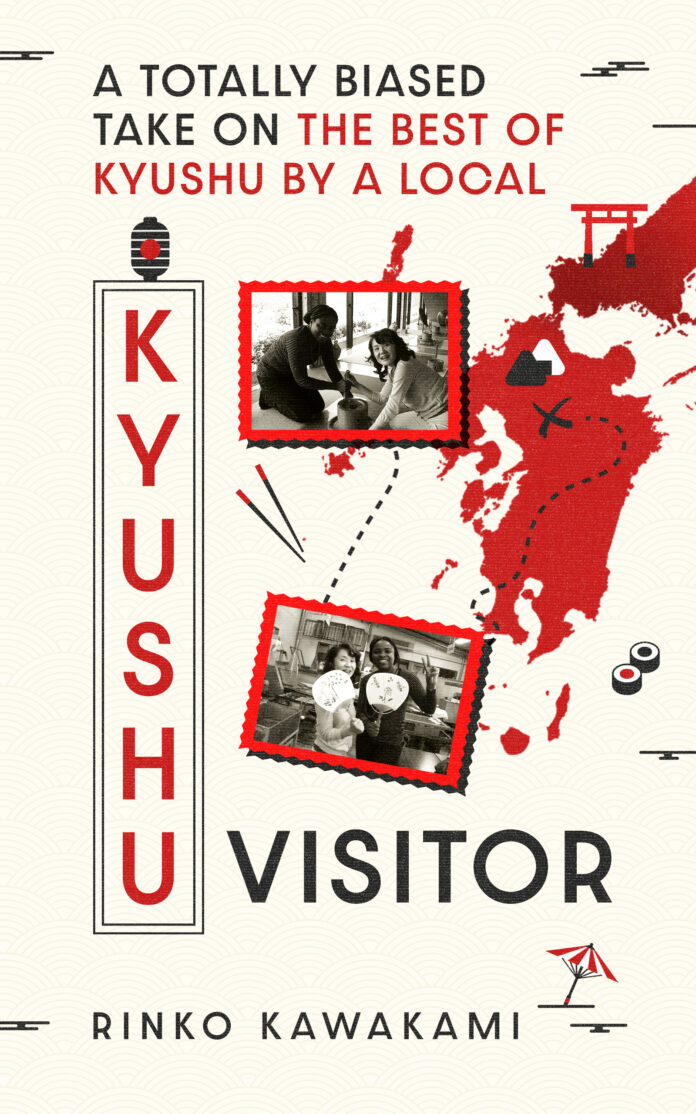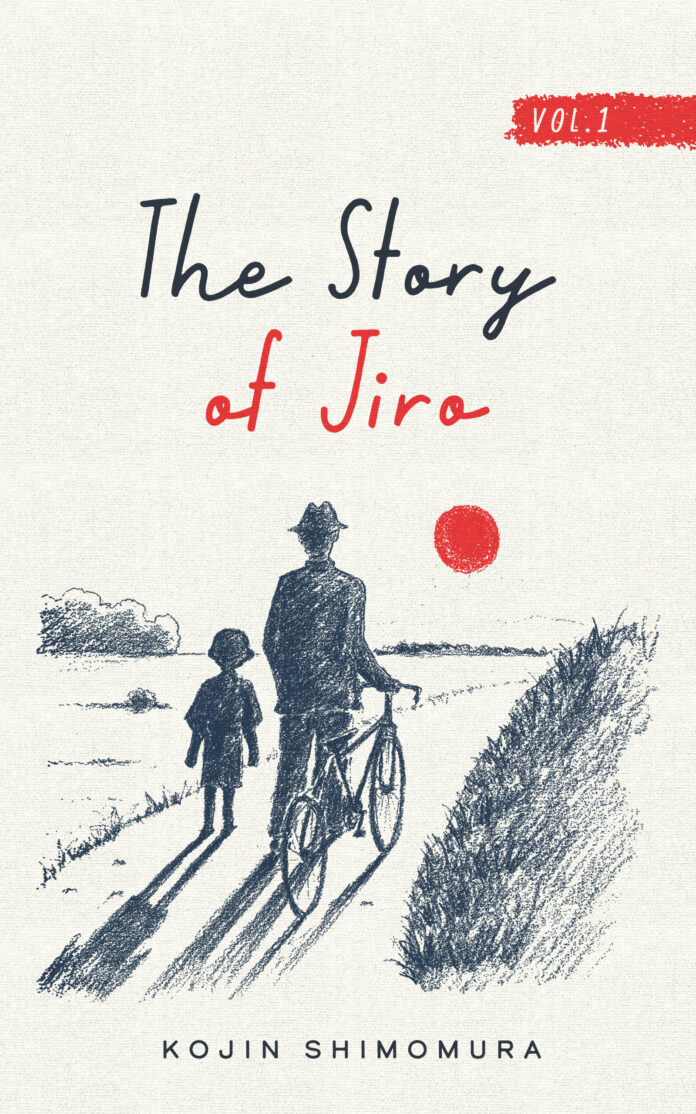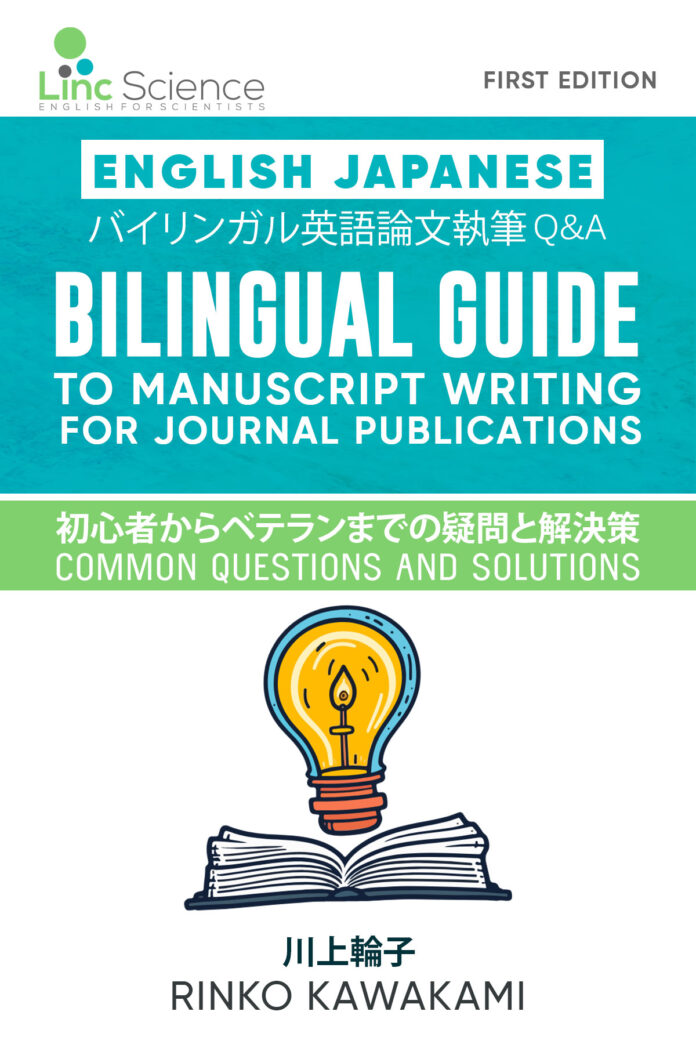Wanting to Test the Waters of Japanese Cuisine?
Perhaps you have heard of it, but in 2013, Japanese cuisine was designated as an Intangible Cultural Heritage by UNESCO. Given this, if you’ve never tried Japanese food before, you might be eager to test the waters but unsure where to start.
If that’s the case, I would recommend trying tonkatsu—a dish made by coating a slice of pork in flour, beaten egg, and breadcrumbs, then deep-frying it)—first, as I believe it is one of the most beginner-friendly Japanese dishes.
Tonkatsu is Beginner-Friendly as It Originated from “Western” Food
The reason tonkatsu is a beginner-friendly dish is that in Japan, tonkatsu was once considered yōshoku (Western-style food), and its roots trace back to kasuretsu (cutlet), which began to spread around 1913, during the early Taishō period.
This was a time when Japan’s food culture began to shift—eating meat became more prevalent, and “Western-style food” gained popularity. By the early Showa era, the dish had gained the name tonkatsu and, along with curry and korokke, became recognized as one of Japan’s three major so-called “Western-style” dishes (san-dai yoshoku) (Ako, 2021).
This is because the method of coating pork in batter and deep-frying with breadcrumbs, used in making tonkatsu, is a Western cooking technique. People who dined out to eat this “novel” dish used to use a fork and knife, rather than chopsticks (Ako, 2021).
There are various theories about the origin of tonkatsu, but according to Okada (2021), it is believed that the prototype of tonkatsu can be found in the “Hōru Kottoretsu” (ホールコットレッツ pork cutlet) mentioned in “Oranda-jin no Ryōri Kondate” (“A Dutchman’s Menu”)—a section of Kōmō Zatsuwa (“Miscellaneous Notes on the Red-Haired People”) written by Morishima Chūryō and published in 1787.
Today, Tonkatsu is Universally Recognized as Japanese Food
Both the Japanese and foreigners alike now agree that tonkatsu is a quintessentially Japanese dish, having been gradually reinvented with unique interpretations and serving styles.
After some experimentation and drawing inspiration from tempura deep-frying techniques, the Japanese began adapting “deep-fat frying” methods in tonkatsu. Over time, they transitioned from using thin cuts of meat to thicker cuts and from the fine, smooth breadcrumbs typical of European-style cooking to the larger, coarser breadcrumbs that are characteristic of Japanese-style tonkatsu (Okada, 2021).
Moreover, Worcestershire sauce, originally from Worcestershire, England, was reinvented in Japan. The Japanese enhanced its distinctive “umami” (pleasant savory taste) by adding vegetables and fruits and thickening it further, making it an ideal pairing with both rice and tonkatsu. Additionally, rather than serving heated vegetables, shredded raw cabbage became the preferred side dish to accompany tonkatsu (Ako, 2021).
This perfect pairing of tonkatsu and shredded raw cabbage is beautifully described as:
“You crunch through the cabbage, washing away the oil in your mouth, then take another bite. Their textures are similar, yet their flavors differ. For me, both share a remarkably close level of sweetness. Without confusing the senses, the umami of the tonkatsu can be fully savored.” (Okada, 2021).
Ajino Katsueda in Fukuoka Lets You Experience Tonkatsu in Ichiju-Issai Style
Aside from its Western origins, tonkatsu is also a beginner-friendly Japanese dish because it is typically served in an ichiju-issai (一汁一菜) style with chopsticks today.
Ichijū-issai is a traditional meal structure consisting of rice, one soup (typically miso soup), and one main side dish. This style is considered the foundation of Japanese cuisine. Pickles are often served alongside, but they are sometimes not counted as a side dish (Doi, 2021).
Located not far from both Hakata Station and Fukuoka International Airport, Ajino Katsueda is a tonkatsu specialty restaurant that lets you experience tonkatsu in the ichiju-issai style for all set meals. Each set meal comes with a choice of either Tonjiru (pork miso soup) or Akadashi (red miso soup).
Compared to most other restaurants in Japan, it serves generous portions—perhaps that’s why it’s usually packed with local businessmen during lunchtime.
For health-conscious individuals concerned about excessive fat intake, the Hirekatsu Teishoku (pork fillet tonkatsu set) is recommended. For those seeking a rich and flavorful taste, the Rōsukatsu Teishoku (pork loin tonkatsu set) is the best choice (Okada, 2021). Additionally, Ebifurai (a dish made by coating shrimp in flour, beaten egg, and breadcrumbs, then deep-frying it) Teishoku is also delicious.
Please note that Aji no Katsueda is a cozy local eatery and only accepts cash.
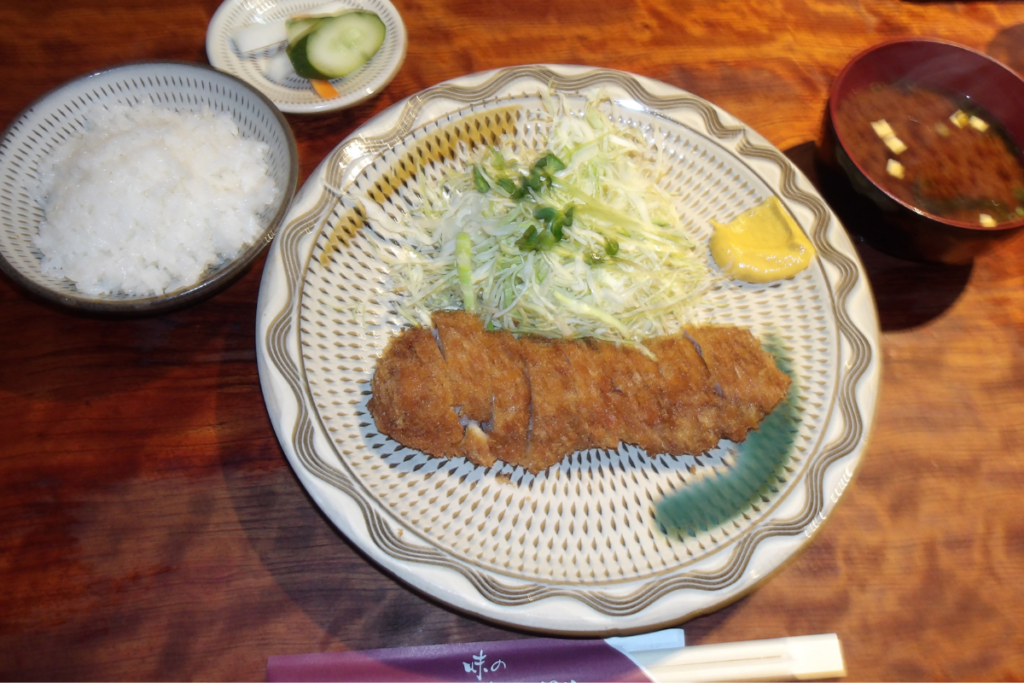
Ichiju-issai is a foundational Japanese meal style consisting of rice, one soup (typically miso soup), and one main side dish.
A Great Place for Champon in Fukuoka and Beyond
As its name ‘Katsu-‘ suggests, Aji no Katsueda is a restaurant specializing in tonkatsu. Surprisingly, however, it also became famous—almost accidentally—for Nagasaki-style Champon, a noodle dish.
This twist came when the deliciousness of the champon, originally served as a staff meal by the restaurant’s founder, Nobuo Tokieda, spread through word of mouth and eventually made its way onto the official menu (Nishinippon Shimbun, 2022). Today, the restaurant has gained its reputation as one of the best places to eat champon, in Fukuoka and beyond.
What is “Champon”?
Nagasaki, located to the southwest of Fukuoka on Kyushu Island, is famously known for champon, which is considered a local specialty of the region. Simply put, champon is a soul-warming, noodle dish with an abundance of fresh ingredients from the region, such as pork, shrimp, squid, cabbage, bean sprouts, onions, carrots, and wood ear mushrooms. Depending on the season, clams or oysters may also be added (JTB Publishing, 2015).
During Japan’s period of isolation under the closed-door policy (Edo period), Nagasaki was the only port open for foreign trade. Due to its role in foreign trade, coal mining, and as a military port, people from various regions gathered there, making it an open and diverse place where new influences mixed together. Perhaps, as a result of this background, there are no strict rules in champon. It became a dish where a variety of ingredients are freely added, without rules about what must be included to truly be called “champon” (Yano, 2015).
In fact, each “Nagasaki” family is said to have its own version of champon and proudly believes their version is the best, often being very particular about its seasoning, preparation, and the exact ingredients to include (Yano, 2015).
The name “champon” itself has various theories regarding its origin, reflecting Nagasaki’s historically diverse influences. One theory suggests that it comes from the Chinese word 喰飯(shān pǔ lóng), meaning a simple meal, with its pronunciation evolving over time. Another theory proposes that it derives from the Portuguese word “chanpon,” which means “to mix” or “to blend” (Ministry of Agriculture, Forestry and Fisheries of Japan, 2025).
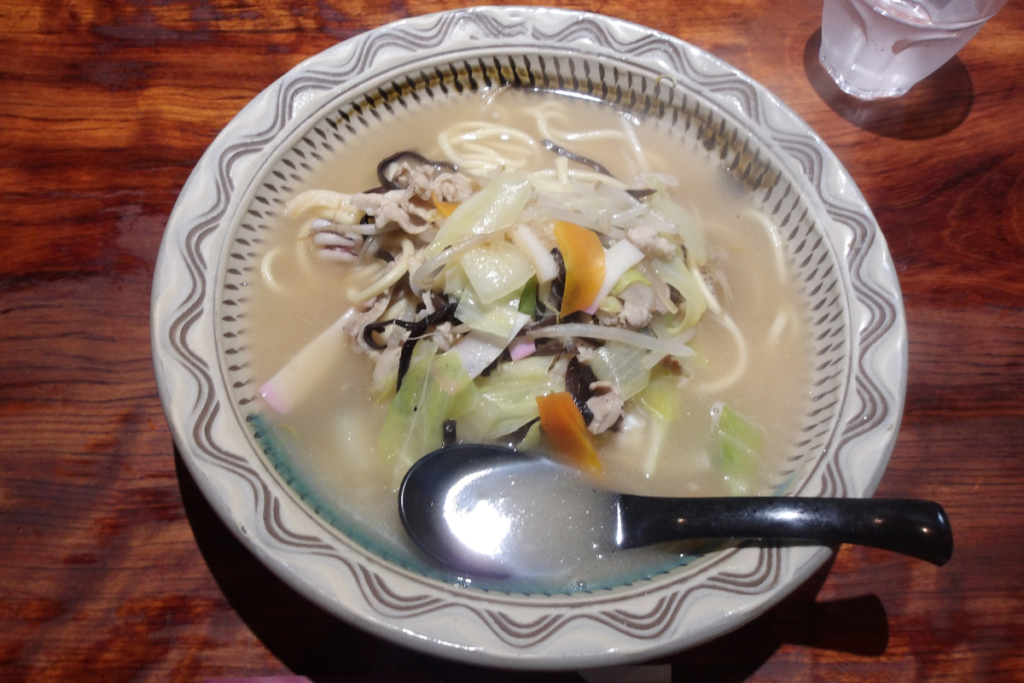
Champon is a soul-warming, noodle dish with an abundance of fresh ingredients from the region.
What’s the Firm, Chewy, Pink, White, or Sometimes Green Garnish in Champon?
When I take foreign friends to eat champon, they almost always ask, “What’s the firm, chewy, pink, white, or sometimes green garnish in champon?”
Well, this chewy, colorful, squishy thing is called hanpen, a fish cake primarily made from a type of lizardfish called Eso (Juntengirl, n.d.). However, other types of fish, such as cod and Guchi (croaker), may sometimes be used (Ishibashi Kamaboko Ten, n.d.).
Nagasaki’s hanpen is different from the steamed fish cake made by mixing shark meat and yamatoimo (Japanese mountain yam), which is common outside the prefecture (Nagasaki Web Magazine “Nagazine,” n.d.). It is, in itself, a local specialty of Nagasaki and is typically used to decorate champion.
An Interesting Option to Try Along with Ramen
Perhaps, understandably, you’re in Fukuoka for ramen—after all, Fukuoka is known as one of the world’s leading ramen destinations. However, if you learn about how champon originated in Nagasaki in 1899, you could even say that it’s a different kind of “ramen” that branched out from it.
According to local anecdote, Chin Heijun, the owner of a Chinese restaurant called Shikairou (四海樓), wanted to serve something affordable yet nutritious to Chinese students studying in Japan. To achieve this, he quickly came up with the idea of champon by stir-frying vegetable scraps and bits of meat, then adding Chinese noodles and simmering it all in soup, only with a single pot—thus, champon was born (Ministry of Agriculture, Forestry and Fisheries of Japan, 2025).
As such, if you are a ramen enthusiast visiting Fukuoka, it makes sense to try champon and see how it compares. You may even find champon more to your liking than ramen, as its ingredients are much heartier, and the noodles tend to be thicker.
Aji no Katsueda (Hirao, Fukuoka)
- Address:
3-7-22 Hirao, Chūō-ku, Fukuoka City, Fukuoka 810-0014
8-minute walk from Nishitetsu Hirao Station
- Hours:
11:30 AM – 2:30 PM, 6:00 PM – 9:00 PM
- Closed:
Sundays, National Holidays
- Smoking:
No Smoking
- Phone Number:
+81 92-523-0296
- Price range:
¥1,000~¥1,999
- Caution:
Cash only
References
Ako, M. (2021). Nihon gaishoku zenshi [A complete history of Japan’s dining-out culture]. Akishobo.
Doi, Y. (2021). Ichiju-issai de yoi to iu teian [A proposal for ichiju-issai]. Shinchosha.
Ishibashi Kamaboko Ten. (n.d.). Katahanpen [Blog post]. Ishibashi Kamaboko Ten. http://ishibashi-kamaboko.com/kamaboko/katahanpen/
JTB Publishing. (2015). Raku raku Kyushu [Relaxed Kyushu] (2016 edition). JTB Publishing.
Junten Girl. (n.d.). Hanpen [Blog post]. Nagasaki champon sara udon no omise “Junten” no musume no burogu [Blog of the daughter of the Nagasaki champon and sara udon shop “Junten”]. Junten Girl’s Blog. http://juntengirl.blog134.fc2.com/blog-entry-77.html
Ministry of Agriculture, Forestry and Fisheries of Japan. (2025). Uchi no kyōdo ryōri: Jisedai ni tsutaetai taisetsu na aji – Nagasaki-ken champon [Our local cuisine: A precious taste to pass on to the next generation – Nagasaki champon]. Ministry of Agriculture, Forestry and Fisheries. https://www.maff.go.jp/j/keikaku/syokubunka/k_ryouri/search_menu/menu/46_8_nagasaki.html
Nagasaki Web Magazine “Nagazine.” (n.d.). Nagasaki miyage meikan Vol.1 fuyu ga tabe-doki Nagasaki kanboko[Discover Nagasaki: A guide to Nagasaki souvenirs, Vol. 1 – The best time to enjoy Nagasaki Kanboko]. Nagasaki City Public Relations and Hearing Division. https://www.city.nagasaki.lg.jp/nagazine/hakken0212/index.html
Nishinippon Shimbun. (2022, April 15). Tonkatsu-ten no meibutsu champon kyōdai de aji mamoritsugu [Tonkatsu restaurant’s signature champon: Brothers continue to protect the flavor]. Nishinippon Shimbun. https://www.nishinippon.co.jp/item/n/907542/


